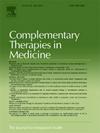经皮耳迷走神经刺激治疗功能性消化不良:系统回顾和荟萃分析。
IF 3.5
3区 医学
Q1 INTEGRATIVE & COMPLEMENTARY MEDICINE
引用次数: 0
摘要
背景:经皮耳迷走神经刺激(taVNS)是一种潜在的无创治疗功能性消化不良(FD)的方法。我们旨在系统地分析taVNS治疗FD的临床证据。方法:检索8个数据库,以确定截至2024年6月27日发表的使用taVNS治疗FD患者的随机对照试验(rct)。主要结局是消化不良症状,而次要结局是总有效率(TER)、生活质量、焦虑、抑郁和不良事件发生率。使用GRADE方法评估证据的确定性。提取了taVNS参数的详细信息和可能的潜在机制。结果:纳入6项随机对照试验,共716名受试者。与假干预相比,taVNS显著改善了消化不良症状、生活质量和临床医生评定的焦虑和抑郁,证据具有中等确定性。基于消化不良症状的TER也明显更高,证据确定性高。当taVNS作为一种附加疗法使用时,消化不良症状得到了显著改善,证据具有中等确定性。未见与taVNS相关的严重不良事件。taVNS的刺激部位为耳甲和耳屏,脉冲频率为25或20Hz,每天2次,持续2 ~ 4周。通过胃调节功能、胃电图、心率变异性和功能磁共振成像来探讨taVNS的发生机制。结论:考虑到证据的确定性,taVNS可改善FD患者的消化不良症状、生活质量、焦虑和抑郁,无严重不良事件。需要更多的高质量研究来建立最佳的治疗方案。本文章由计算机程序翻译,如有差异,请以英文原文为准。
Transcutaneous auricular vagus nerve stimulation for functional dyspepsia: A systematic review and meta-analysis
Background
Transcutaneous auricular vagus nerve stimulation (taVNS) is a potential noninvasive treatment for functional dyspepsia (FD). We aimed to systematically analyze the clinical evidence of taVNS for FD.
Methods
Eight databases were searched to identify randomized controlled trials (RCTs) using taVNS in patients with FD published by June 27, 2024. The primary outcome was dyspepsia symptoms, whereas the secondary outcomes were the total effective rate (TER), quality of life, anxiety, depression, and incidence of adverse events. The certainty of the evidence was assessed using the GRADE methodology. Detailed information on the taVNS parameters and the suggested underlying mechanism were also extracted.
Results
Six RCTs with 716 participants were included. Compared to the sham intervention, taVNS significantly improved dyspepsia symptoms, quality of life, and clinician-rated anxiety and depression with moderate certainty of evidence. The TER based on dyspepsia symptoms was also significantly higher with high certainty of evidence. When taVNS was used as an add-on therapy, dyspepsia symptoms were significantly improved with moderate certainty of evidence. No serious adverse events related to taVNS were reported. The stimulation sites for taVNS were concha and tragus, with common pulse frequencies of 25 or 20 Hz twice a day for 2–4 weeks. Gastric accommodation, electrogastrogram, heart rate variability, and functional magnetic resonance imaging were measured to explore the mechanism of taVNS.
Conclusions
Considering the certainty of the evidence, taVNS can improve dyspepsia symptoms, quality of life, anxiety, and depression in patients with FD without serious adverse events. Additional high-quality studies are needed to establish optimal treatment protocols.
求助全文
通过发布文献求助,成功后即可免费获取论文全文。
去求助
来源期刊

Complementary therapies in medicine
医学-全科医学与补充医学
CiteScore
8.60
自引率
2.80%
发文量
101
审稿时长
112 days
期刊介绍:
Complementary Therapies in Medicine is an international, peer-reviewed journal that has considerable appeal to anyone who seeks objective and critical information on complementary therapies or who wishes to deepen their understanding of these approaches. It will be of particular interest to healthcare practitioners including family practitioners, complementary therapists, nurses, and physiotherapists; to academics including social scientists and CAM researchers; to healthcare managers; and to patients. Complementary Therapies in Medicine aims to publish valid, relevant and rigorous research and serious discussion articles with the main purpose of improving healthcare.
 求助内容:
求助内容: 应助结果提醒方式:
应助结果提醒方式:


